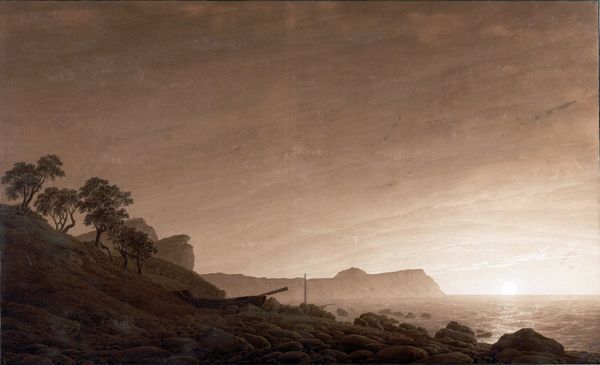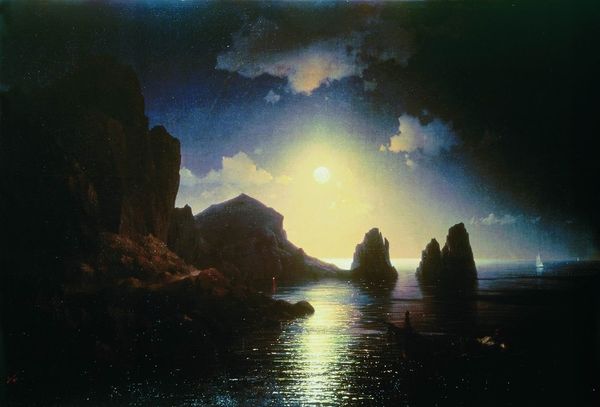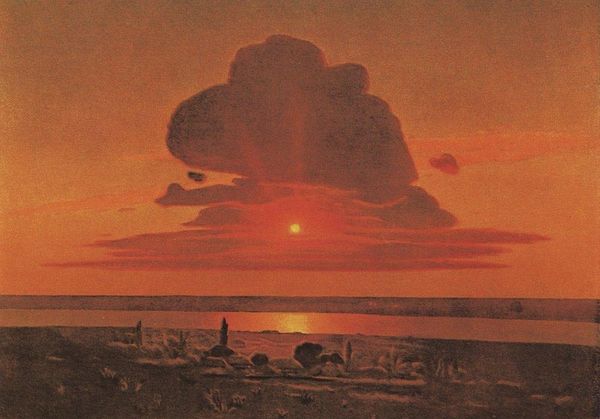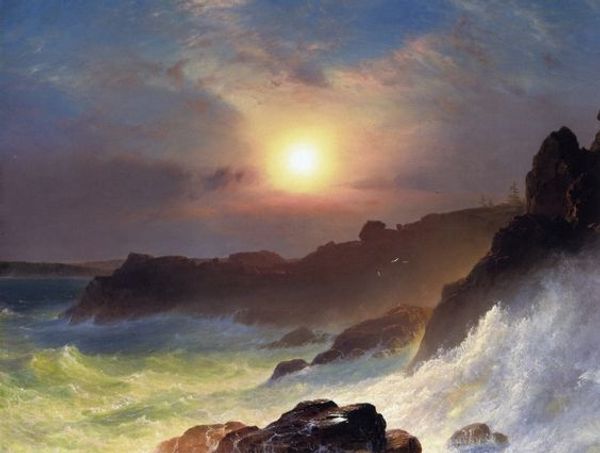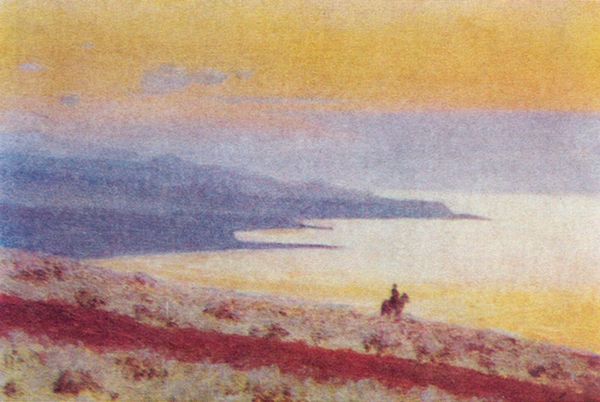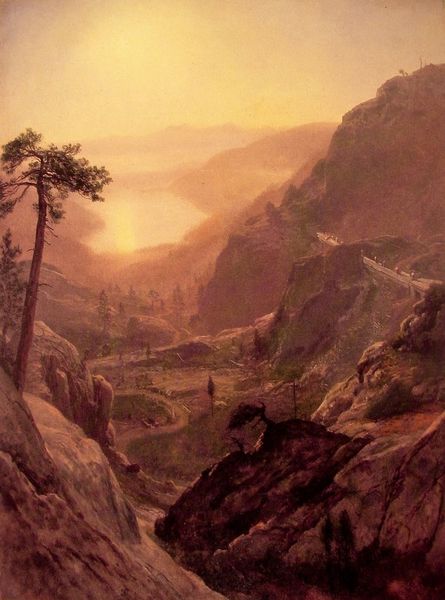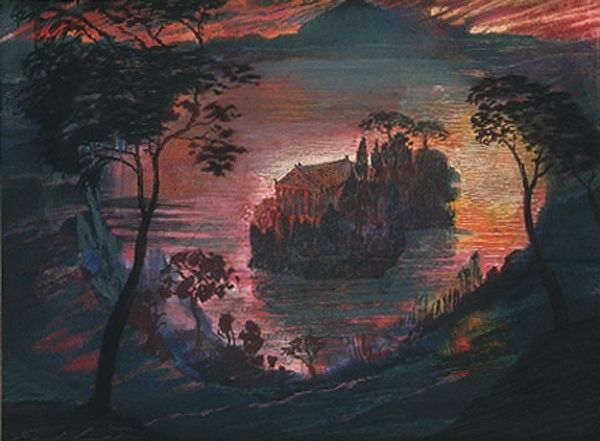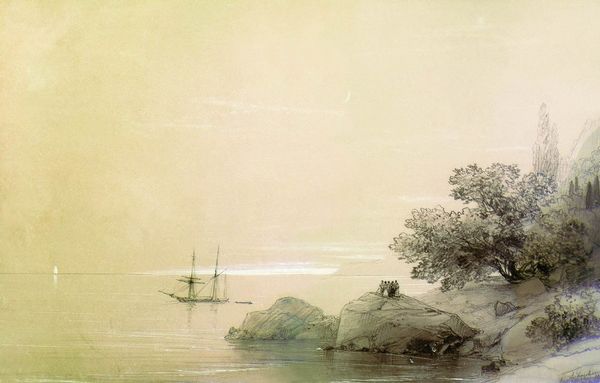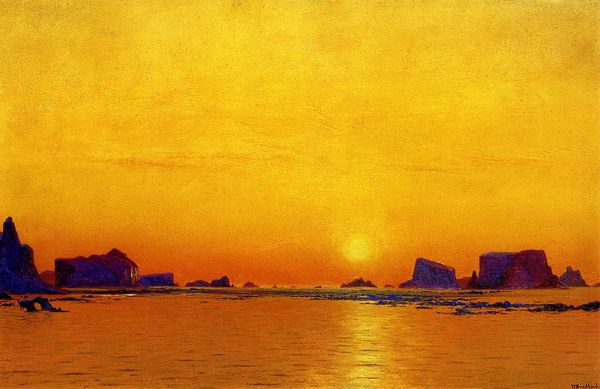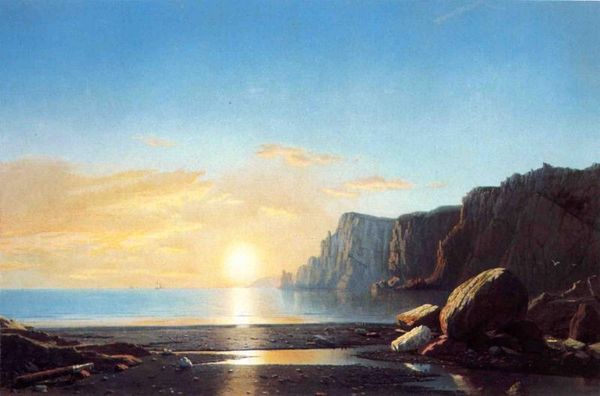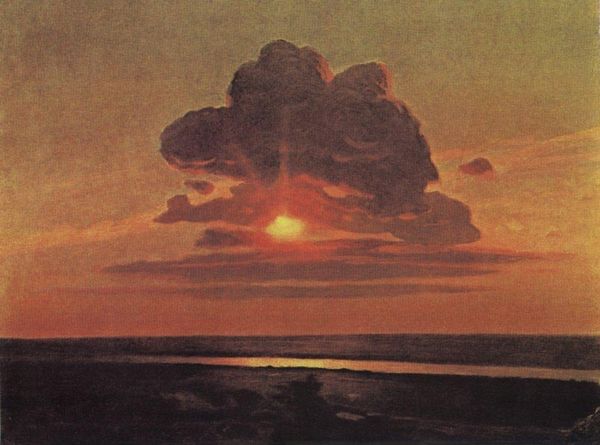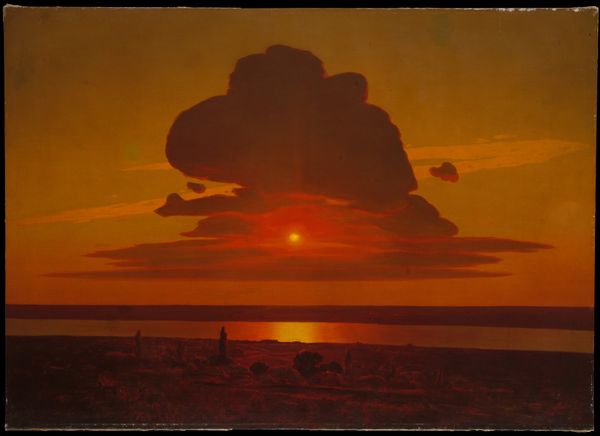
Copyright: Public domain
Curator: Here we see Frederic Edwin Church's "Grand Manan Island, Bay of Fundy" from 1852, rendered in oil paint. Editor: The pervasive warm light, the gradation from land to sea, I am struck by how Church used color and texture to give the composition weight and drama. It verges on being theatrical. Curator: I'm so glad you picked up on that theatrical quality. Church, as part of the Hudson River School, often used these grand landscapes to express and even construct American national identity. It speaks to manifest destiny. The inclusion of the lone figure also tells us much about his narrative agenda here. Editor: I’d agree. He seems to be using this figure as a kind of perspectival key, drawing the viewer's eye toward that dazzling vanishing point on the horizon. A visual cue that highlights the sublime. It's also interesting the man almost blends into the color of the stones and sand. Curator: And that idea of the sublime also feeds into the politics of the time. These expansive vistas suggest the unlimited potential of the American landscape, ripe for exploration, and resource extraction which became a very prominent political idea during this time. Editor: There’s almost an inherent tension, though. This stunning light, rendered with such visible brushwork, does highlight a stark beauty. And while sublime, it borders on overwhelming the figure, emphasizing perhaps the individual’s place against nature's power. Curator: That tension is key! This also became a marker of class distinction. Owning land or resources allowed families to thrive at the expense of many marginalized communities. That tension reveals the mythologies embedded within romanticizing landscape paintings like this. Editor: Indeed, the drama and use of shadow could reflect a specific time of day and how that alters the perception of forms and space. Well, those fiery reds, the artist’s handling of perspective, are certainly striking. Curator: Absolutely. Appreciating Church's formal qualities encourages critical conversations. Seeing this picture through both the formal elements and historical lens enriches our perspective on the role of landscape in 19th-century American life. Editor: Yes, and in doing so, we open a valuable dialogue. We start seeing past surface impressions and towards cultural intent.
Comments
No comments
Be the first to comment and join the conversation on the ultimate creative platform.

